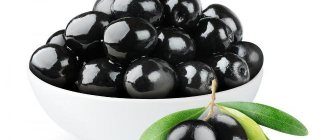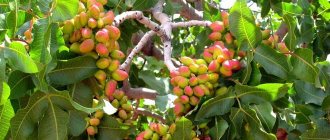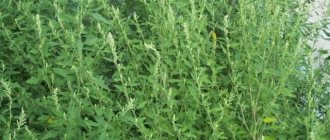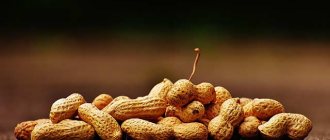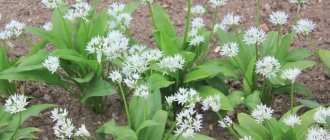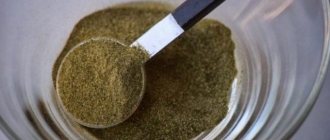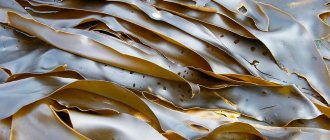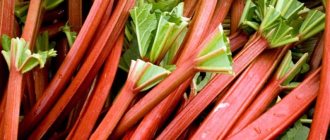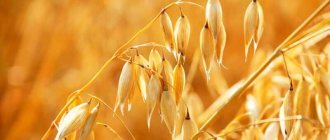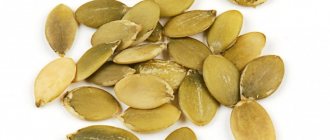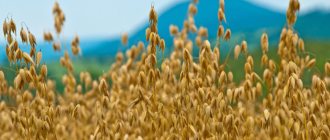Lavender is a genus of plants in the Lamiaceae family, which includes about 50 species and hybrids (photo). Broad-leaved and narrow-leaved are used in industry. Wild lavender grows in the Mediterranean countries, North and South America, Africa, Australia, the Arabian Peninsula, and India. Cultivated species are common in flower gardens around the world.
Lavender fields
The plant is used in perfumery, pharmaceutical, and food industries; its flowers are used to make floral compositions and used for aromatization in houses and apartments.
In the article we will analyze in detail the pros and cons of using lavender, its healing properties and applications.
Useful, medicinal properties
All the medicinal properties of lavender are determined by the high concentration of essential oils in it. For their production, all above-ground parts of the plant are used: stems, leaves, inflorescences. The ability to retain its aroma and attractive appearance for a long time has made the plant popular in dry form.
What are the benefits of lavender:
- It has an antiseptic effect and promotes rapid healing of wounds, burns, and ulcers.
- Calms the nervous system, reduces anxiety, helps fight depression.
- Improves sleep.
- Effectively fights headaches and migraines.
- Stimulates the production of insulin by pancreatic cells, which allows the use of lavender in the treatment of type 2 diabetes.
- The pronounced antibacterial property makes it effective against tonsillitis, bronchitis, pneumonia and other respiratory diseases.
- Helps fight dandruff, hair loss, as well as skin diseases (dermatitis, eczema, fungal infections).
- Strengthens the immune system due to its high content of antioxidants.
- Eliminates joint pain caused by arthritis.
- Relieves itching and swelling after insect bites.
- Reduces blood pressure.
- Facilitates the digestion of food, normalizes intestinal microflora.
- It has an antispasmodic, choleretic effect and helps in the fight against cholelithiasis.
- Is a diuretic.
This is how lavender blooms
Features of the impact on men and women
Lavender is widely used in gynecology:
- Combats mood swings during menopause.
- Eliminates menstrual pain.
- Helps to establish a cycle.
- Relieves the symptoms of premenstrual syndrome.
- Effective in the fight against inflammatory diseases (thrush, cystitis, urethritis), due to its pronounced antiseptic properties.
Lavender has a positive effect on men's health:
- Helps in the fight against benign prostatic hyperplasia.
- Effective for cystitis and urethritis.
- Increases potency.
Impact on the body
The benefits of lavender for the body (and the possible harm resulting from the effects on the body presented below) can be summarized with the following points:
- improved treatment of skin diseases (acne, psoriasis, eczema, allergies);
- acceleration of wound healing (burns, carved wounds, other open wounds);
- calming the nervous system;
- improved blood flow;
- help with sleep problems;
- relief of migraine and other headaches;
- improved digestion;
- improvement of liver function;
- elimination of flatulence and abdominal pain;
- support for regular (and stabilization) bowel movements;
- immune support;
- antibacterial and antiseptic effects;
- reducing high blood pressure;
- diuretic effects - removing excess water from the body;
- relief of cough (asthma, bronchitis, allergies, flu) and acceleration of mucus removal;
- improvement of the condition and elasticity of the skin (including improvement of the scalp).
Article for you:
Useful properties and contraindications of star anise and use in folk medicine
Contraindications, possible harm
Lavender has contraindications and restrictions for use:
- A side effect of taking it may be allergic reactions.
- Essential oil in its pure form can cause burns, so for external use it is mixed with other oils and cosmetic compositions.
- The calming effect of the plant can cause drowsiness, which should be remembered before performing work that requires increased concentration.
- Lavender is not used when taking iodine and iron-containing medications, as it reduces their absorption.
- It is not recommended to use the plant if you have blood clotting disorders or after surgery due to the presence of coumarin in it and the risk of bleeding.
- The use of the plant should be avoided in case of severe endocrine diseases or malignant neoplasms.
The norm for using aroma oil for a healthy person is no more than 2-3 drops per dose (in the bath, in body cream, on a pillow or aromatherapy sachet). When using at home, you need to follow the recommendations and listen to the feedback from your doctor.
Contraindications and possible harm
Contraindications for drinking lavender tea:
- Increased stomach acidity. Lavender in tea can cause heartburn and cause ulcers.
- Hypotension. The plant will reduce blood pressure, cause weakness, dizziness and nausea.
- Individual intolerance to grass.
It is not recommended to drink lavender tea during treatment with drugs containing iodine and iron. This leads to a decrease in the effectiveness of therapy.
Pregnant and lactating
During pregnancy and lactation, external use of products containing lavender will improve the condition of the skin, prevent the formation of stretch marks, and help cope with rashes and redness. Oil baths will ease the symptoms of toxicosis, and in late pregnancy will reduce swelling of the legs. It is also recommended to use essential oil to massage the back and legs, to relieve fatigue and tension, and to prevent varicose veins of the lower extremities.
It is better to refrain from consuming lavender during pregnancy, especially in the first trimester. Products containing the essential oil of the plant can provoke uterine hypertonicity, threaten early pregnancy termination, and also cause adverse reactions in the newborn.
Pregnancy and breastfeeding
Experts do not agree on the use of lavender during pregnancy: while some point out the benefits for pregnant women, others warn against use during this period. The benefits for pregnant women are as follows:
- relief of toxicosis;
- strengthening the immune system;
- removal of edema;
- preventing stretch marks;
- sleep disorders;
- prevention of varicose veins.
But, due to the divergence of opinions, you should consult your doctor about the use of natural medicine! It is better to use a dried plant rather than purchased oil.
Article for you:
Snitch: medicinal properties and contraindications in folk medicine, use in cooking
When breastfeeding, the same rules apply as during pregnancy. You can use lavender externally (baths, washes) during both periods.
Is it possible for children
Giving lavender to children under 14 years of age is not recommended. Only external use of essential oil is allowed, for bathing and inhalation.
A few drops of lavender in the aroma sachet next to the child's bed will ensure a sound sleep for the baby. Baths with the plant help in the fight against hyperexcitability syndrome. Inhalations are effective for runny nose, tonsillitis, and pneumonia. Just first make sure there are no allergic reactions. Bathing babies in a decoction of string and lavender is a means of preventing and treating diaper rash.
Chemical composition, calorie content
The widespread use of lavender, its benefits and harms are explained by its chemical composition.
The most valuable component of the plant is essential oil - a complex of derivatives of organic acids contained in the cells of inflorescences, stems, leaves:
- Terpene alcohols: geraniol, borneol, linalool, camphor, terpineol, cineol. Used in perfumery, production of cosmetics, disinfectants.
- Butyric, capronic, valeric, acetic, ursolic acids.
- Flavonoids: diosmin, luteolin. They are natural antiseptics, antioxidants, and are used in the production of dyes.
- Pinenes used for the synthesis of camphor.
- Citral, as a source of vitamin A, has a pronounced lemon aroma.
- Coumarin.
100 g contains 23 kcal, but the whole plant is not consumed as food, so the energy value of the product must be calculated based on the main ingredients.
What are the benefits of lavender for the body?
The benefits and harms of lavender for the body have been known since ancient times. Traditional healers have long used it as a sedative. It was used to treat headaches, with diuretic and choleretic purposes. But the beneficial properties of the plant are not limited to the medical industry. Lavender improves the condition of hair and skin, which is why it has become widespread in cosmetology.
We advise you to read: Echinacea for immunity is the best medicine for the human body
Below are just the most pronounced effects of this plant:
- diuretic;
- painkiller;
- antimicrobial;
- hypotensive (lowers blood pressure);
- hypolipidemic (reduces the amount of cholesterol and fats in the blood);
- hemostatic (stops minor bleeding);
- promotes intestinal motility;
- calming;
- deodorizing (eliminates unpleasant odors).
Lavender oil: properties and applications
Lavender essential oil is widely used in aromatherapy and cosmetology.
As an aroma component it is applied to aromatic stones, pendants, added to aroma lamps, massage oils, used for cold and hot inhalations, in baths, saunas. Lavender oil improves sleep, strengthens the immune system, has an expectorant effect, stimulates the production of digestive enzymes, and lowers blood pressure. In large doses it has a stimulating effect on the nervous system.
Thanks to its pronounced aroma, the oil repels insects and is also used in the fight against external parasites (lice, fleas). There is evidence that inhaling the aroma reduces the likelihood of breast cancer.
It is widely used in dermatology due to its antiseptic, anti-rosacea and anti-inflammatory effects.
Differences between lavender and other herbs
Lavandin is an artificial hybrid of angustifolia and broadleaf lavender. It smells more intensely and is used in floristry, for scenting rooms and linen. The use of lavandin for food and cosmetic purposes is not recommended due to the high likelihood of burns. Widely distributed, it is an inexpensive substitute for lavender.
Sage is a relative of lavender and also belongs to the Lamiaceae. It is used more often in pharmaceuticals and light industry due to its lower cost and wider distribution. The essential oil of the plant is used as a flavoring agent in toothpastes and powders.
Lavender is sometimes confused with heather because of its similar lilac-colored spikelets. It has similar beneficial properties, but is used much less frequently.
Sage Heather
Benefits and harms for various diseases
Diabetes
According to studies, the aroma of lavender essential oil reduces blood glucose levels, protects the liver and pancreas from antioxidant depletion (destruction of organ cells under the influence of free radicals). It is recommended to use the oil in aroma diffusers and lamps, or simply apply 1-2 drops to the skin, hair or clothing.
Gastritis
For gastritis, lavender tea normalizes the production of gastric juice, relieves inflammation of the mucous membrane, and reduces pain. It is recommended to drink 1 cup of the drink during the day. The essential oil of the plant also has an analgesic and relaxing effect.
The use of lavender products is contraindicated for gastritis with high acidity, gastric ulcers in the acute phase.
Gout
Lavender effectively reduces pain, relieves swelling, inflammation of the joints due to gout. To do this, you can drink tea from the flowers of the plant (250 ml of freshly prepared drink per day), make compresses with a decoction, or rub with the addition of essential oil.
Cholelithiasis
Lavender eliminates stagnation and spasm in the bile ducts, easing the course of cholelithiasis and cholecystitis. It is used as a component of aromatherapy, in infusions (usually 400 ml of infusion is recommended to be consumed during the day).
Eczema
To treat dry eczema, plant flowers infused with base oils are used, lubricating the affected areas with them 2-4 times a day. Lavender promotes healing of affected areas and relieves inflammation.
Bronchial asthma
Aromatherapy using lavender essential oil helps relax the smooth muscles of the bronchi and has a positive effect during an attack of bronchial asthma. To do this, add 1-2 drops of oil to the aroma lamp and breathe for 15 minutes. An allergy test should be performed before use!
Using lavender at home
What are the uses of lavender at home? There are recipes for making tea, decoctions, infusions, alcohol tinctures, and lavender oil. Essential oil can be purchased at herbal pharmacies.
Essential oil
Lavender essential oil is obtained through steam distillation. It is a yellow-green liquid, bitter in taste, with a pleasant lavender aroma. The main production is concentrated in Italy, Bulgaria, Moldova, France and Russia. The healing properties of lavender oil are the same as those of the plant’s flowers, but are even more pronounced. First of all, the oil is valued by the terpene alcohol linalool, which has a beneficial effect on the nervous and cardiovascular systems and is valued in cosmetology.
Security measures:
- essential oil is not taken orally in its pure form, but is most often diluted in an alcohol solution;
- Before external use, it is recommended to carry out a test application on a small area of skin;
- you need to choose a certified product made with high-quality oil;
- due to the toxic properties of the drug, the dosage and course of treatment should not be violated;
- exceeding the dose can lead to side effects from the nervous system (dizziness, confusion, drowsiness) and digestion (nausea, vomiting, diarrhea);
- The oil should be used with great caution by allergy sufferers, both internally and externally.
What are the uses of lavender essential oil?
- Added to medicinal baths for neuroses to normalize sleep.
- Widely used in aromatherapy.
- Added to ointments for external use for burns, bruises, dislocations, wounds, scratches.
- Add to rubs and warm compresses for inflammation of joints, tissues, and nerves.
- Lavender oil is especially beneficial for hair.
- Taken orally in a strict dosage for nervous excitability, diseases of the gastrointestinal tract, urination, joints, heart and blood vessels, inflammation of the respiratory system.
- Lavender oil is often combined with rosemary or marjoram, it enhances their effect.
Homemade oil
Lavender oil is an oil extract of dry or fresh herbs. It is better to use olive oil as a base.
Preparation
- Take 1 part of crushed raw materials.
- Pour in 5 parts oil.
- Leave in a dark place for at least 1 month.
- Strain.
Used externally for all of the above diseases. Use internally in diluted form. This is a good pain reliever. It is recommended to mix it with alcohol and use it as a rub for joint and muscle pain. Homemade lavender oil can also be used on hair.
Tea and infusion
Lavender tea is famous for its calming properties. It is recommended to take it for the prevention of neuroses, depression, and constant stress. It is good to take this drink warm and at night. It is recommended to drink in small sips and slowly.
Making tea
- Take 2 tsp. dry raw materials.
- Pour a glass of boiling water.
- Cover and leave for 10 minutes.
- Strain.
Lavender tea can be sweetened with honey, this helps with colds and helps to quickly relax the nervous system. But for digestive problems, it is recommended to drink unsweetened lavender tea. A glass of tea can be drunk throughout the day, divided into 3 doses.
Preparing the infusion
- Take 3 tsp. dry raw materials.
- Pour 2 cups boiling water.
- Leave for 30 minutes.
- Strain.
You can drink ¼ glass 4 times a day. It helps well with headaches, migraines, neuroses, spasms, stomach and intestinal colic, indigestion, and insomnia. It is also an effective choleretic and diuretic. This infusion can be added to baths, made into lotions, and treated with it on the skin.
Alcohol tincture
Alcohol tincture of lavender is less popular than essential oil. However, it also has its advantages. It is recommended to dilute the oil in an alcohol solution, which reduces toxicity and enhances the soothing effect of the herb.
Preparation
- Take 1 part of the herb.
- Pour 5 parts of 40% alcohol.
- Leave for 1 week.
- Strain.
The dosage and course of treatment are prescribed by the doctor. There is a recipe for lavender tincture in 70% alcohol, it is called a “female antidepressant.” Healers recommend it for hormonal disorders in women, PMS, hot flashes during the premenopausal period, nervousness and irritability, and mood swings. For these symptoms, it is recommended to combine lavender with motherwort and valerian.
Application in cosmetology
Lavender in cosmetology is one of the most popular herbal remedies. It is often used to flavor cosmetics and perfumes. The herb extract is added to soaps, shampoos, creams, tonics, lotions, masks, gels, perfumes, eau de toilette, and deodorants. Lavender essential oil can be used on its own to enrich shampoo, cream, toner or face mask.
- For hair. The herb is best suited for oily hair. Rinse your hair with lavender decoctions after washing. Essential oil is recommended for hair loss. It is most often used with other oils - castor and burdock. Add to strengthening hair masks based on nettle and burdock root.
- For skin. The herb has antiseptic and regenerating properties. Helps get rid of acne and pimples, promotes wound healing without scarring, and eliminates spots on the skin. In its pure form, lavender oil can only be used for local treatment of acne. You can't wipe your face with it! It is recommended to mix lavender with tea tree, jojoba, coconut, and flaxseed oil. Useful for oily, problem skin.
Use in cooking
Due to its specific spicy smell, the herb is often used in the alcoholic beverage industry. It is also popular in cooking. It is valued and loved by Italians, Spaniards, and French. Dry grass is used as a seasoning for preparing soups and salads, sauces, and fish dishes. Also used when smoking meat and fish. Often combined with sage, dill and savory. Lavender oil can also be used as a spice, but in small quantities.
Insecticide
Lavender is an effective insecticide against moths, bedbugs, carpet beetles, and fleas. The pungent smell of grass repels insects. How is it used?
- You can use dried lavender, place it in cabinets, or place sprigs on the floor.
- You can also drip essential oil onto a piece of cloth or into a bowl.
- Lavender evaporates quickly, so it needs to be replaced frequently.
- It is recommended to make a lavender sachet - a pillow with filling; it can also be used to scent linen and clothes in the closet.
- Disinfecting a room can also be beneficial for the nervous system.
- However, you need to remember safety precautions: excess vapors of lavender essential oil can cause side effects such as lethargy and drowsiness.
How else is the herb used?
- Lavender is a natural repellent. Helps protect against mosquitoes and midges outdoors and indoors. It is combined with other essential oils - tea tree, cedar, cloves, peppermint. They are mixed in the following proportion: 5 drops of lavender oil and 5 drops of another product. The prepared repellent can be used on children.
- For complex treatment of pediculosis. The most effective against lice are lavender, bergamot, geranium, and eucalyptus oils. It is better to use a mixture of these oils. They are diluted in basic vegetable oil, then rubbed into the scalp and hair, left for several hours under cellophane.
The main beneficial properties of lavender are sedative, analgesic and bactericidal. The herb is used for diseases of the nervous, digestive, urinary, and cardiovascular systems. Lavender helps relieve pain from neuralgia, rheumatism, gout, sprains and bruises. Essential oil is often used in aromatherapy, dermatology and cosmetology.
Features of brewing tea
To preserve all the valuable qualities of lavender tea, it is important to prepare it correctly.
- The water temperature should be no more than 70°C, otherwise the beneficial components contained in the flowers will be inactivated.
- The tea should be infused under a tightly closed lid or in a thermos. This is necessary in order to prevent the evaporation of essential oils, without which the tea will lose its aroma and benefits.
- Before brewing, you need to pour boiling water over the teapot so that the tea leaves are heated evenly.
Classic recipes
To get lavender tea, add 1.5 teaspoons of dried lavender flowers to 250 ml of water at the desired temperature and infuse. For a more concentrated taste, you can increase the amount of tea leaves to 1 tablespoon.
To enhance the beneficial properties of lavender and its taste, other components are added to tea. Connoisseurs say that mixing the flowers of the plant with classic varieties of leaf black and green tea reveals its taste and aroma more clearly.
By adding a spoonful of honey to tea, you can get an effective remedy for coughs and colds.
For severe anxiety and insomnia, you can add dry valerian root. One tbsp. spoon of lavender flowers, 2 teaspoons of dry crushed valerian root, pour 500 ml of water, leave for 30 minutes under the lid.
An alternative to tea is lavender milk. The drink has the same beneficial properties as tea. 1 tbsp. pour a spoonful of dried lavender flowers into 500 ml of hot milk at 70°C, add a spoonful of honey, leave under the lid for 30 minutes.
What herbs does it go with?
Mint will add a refreshing note to lavender tea and help eliminate bad breath. It is also a sedative, improves sleep and digestion.
Chamomile and dried lavender are the most common combination. Chamomile enhances the sedative effect, helps fight viruses and bacteria, and eliminates swelling.
Fennel seeds in combination with lavender speed up metabolism and promote weight loss.
A cold drink made from hibiscus and lavender quenches thirst well in the heat and helps lower blood pressure.
A drink made from lavender and fireweed saturates the body with vitamin C, antioxidants, and microelements.
Lavender syrup
The healing properties of lavender syrup have proven themselves in cases of neurasthenia, headaches, migraines, arrhythmias, and laryngitis.
Preparation:
- Pour 1 kg of sugar into 1 liter of water, cook over low heat until the sugar is completely dissolved, stirring constantly. It is better to use dishes with a thick bottom.
- Add 10 tbsp. spoons of dried or fresh lavender flowers, stirring, cook for another 20 minutes.
- Cover with a lid and let it brew for 24 hours.
- Strain and pour into glass jars with tight lids.
- The finished syrup can be stored in the refrigerator for up to 3 years.
- Take 1 teaspoon 3 times a day 30 minutes before meals. Can be added to herbal tea.
Recipe for decoction, infusion
A decoction of lavender flowers effectively combats joint pain due to gout.
2 tbsp. spoons of dried flowers, pour 500 ml of boiling water, cook over low heat, covered, for 10 minutes. Cool and strain. We use the decoction in the form of compresses and lotions on the area of the affected joint.
When taken orally, the infusion copes with tachycardia, bile stagnation, and insomnia. When added to a hot bath, it eliminates sweating of the feet, unpleasant odor, promotes relaxation, and relieves swelling.
To prepare 3 teaspoons of lavender flowers, pour 400 ml of boiling water, cover with a lid, wrap in a blanket and leave for 40 minutes. We filter. Drink 400 ml of infusion during the day.
Beneficial Effects
The healing properties of this wonderful plant have been known to people for a long time. Our grandmothers sewed pillows from grass as filling, which ensured quality sleep. The essential oils contained in lavender are responsible for this.
They have a calming effect on the nervous system, improve psychological stability, and have anti-inflammatory, disinfectant and antibacterial effects.
Lavender tea helps to cope with nervous weakness, lower blood pressure (here, in addition to the benefits of tea with lavender, it is important to take into account the harm - with low blood pressure) and relieve headaches.
Tea will help with conditions such as stress, hysteria, tremors, migraines. Its beneficial effects are known for asthma and intestinal colic.
It is easily digestible and suitable for improving liver and gallbladder function. A strong decoction or tincture will serve as a rinse to treat small ulcers and inflammations in the mouth. Rinse relaxes tongue paralysis.
Healthy skin When caring for your skin, it is recommended to use the healing power of lavender oil:
- Use undiluted to relieve the pain of insect bites, treat eczema and fungal diseases, purulent wounds and minor burns;
- anti-inflammatory effect prevents the creation of blisters and accelerates the healing of burns; in summer, the oil is excellent as a remedy for sunburn.
Skin damage and wounds Soak a clean cloth in the infusion (decoction) and apply to the affected area, securing with a bandage. The procedure should be repeated 2-3 times a day. The affected area should be kept clean and dry.
Mental health and good sleep An aromatic bath will help with mental stress, high blood pressure and insomnia (see preparation above). A pillow made from dried flowers will also help.
Herpes, gout or rheumatism You can make a tincture from dried lavender flowers. Pour 25 g of flowers with 250 ml of good alcohol. Close and leave for 2 weeks. Then stir, strain and pour into a dark glass bottle. The tincture is suitable:
- for body massage;
- for temple massage (for headaches);
- with a few drops of tincture you can get rid of herpes on the lips;
- used as a rub for gout, rheumatism and inflammation of the nerves;
- for flu or sore throat, you can make a gargle from the tincture (1 tablespoon per 1 glass of water);
- 5-10 drops of tincture added to 20 ml of cream is a good remedy for treating acne.
Article for you:
Resin moss: medicinal properties and contraindications in folk medicine
Lavender tincture applied directly to the scalp helps treat dandruff and excessive hair loss. Local use is recommended against baldness.
When diluted with water (1:1), you get a good conditioner to make hair easier to comb. The tincture diluted (1:1) is used as an aftershave lotion.
Flu or cold Lavender reduces fever, relieves pain, and counteracts bacteria and viruses, so it is suitable for the treatment of colds and flu. During illness, drink 1 glass of lavender tea in the morning and evening.
Tea for colds and flu You need:
- 2 tsp dried or fresh lavender;
- 250 ml boiling water;
- 1 tsp honey;
- slice of lemon or lime.
Pour boiling water over the herb and leave for 10-15 minutes. Strain the tea, add honey and a slice of lemon (lime).
Gastrointestinal disorders Lavender tea prepared according to the above recipe is also suitable for the treatment of digestive problems, helps with indigestion, flatulence, stomach and intestinal colic. It should be taken 2-3 times a day.
When to collect, how to dry
July is the most suitable time for harvesting lavender inflorescences - the time of abundant flowering. During this period, the concentration of essential oils is maximum. Leaves can be collected later, until the end of August.
The plant should be dried in a well-ventilated area, protected from direct sunlight. Inflorescences without stems, leaves are laid out on paper, stirring occasionally. Another option is to cut the inflorescences with the stem and dry them in the form of bouquets, hanging them on a rope.
It is better to store the prepared raw materials in a glass jar with a lid or cotton bags. The shelf life of lavender is 2 years.
In what form is it sold?
On sale you can find the plant fresh, in filter bags as part of herbal teas or single-component tea, as well as in the form of essential oil.
If you decide to purchase fresh flowers and dry them yourself, check where the plant grew. Were fertilizers, insecticides, antifungal agents used, and if so, which ones (organic or synthetic, what hazard class). Be aware that plants grown near highways and railroad tracks can accumulate heavy metals.
When choosing ready-made tea, also make sure that there are no harmful components (it is better if the packaging contains an indication of the place where the plant was collected).
Lavender in folk medicine: 10 recipes
Lavender syrup
Necessary:
- 1.5 liters of water;
- 700 g - 1 kg of sugar;
- 30 g citric acid;
- 100-130 g of lavender flowers;
- 1 lemon.
Recipe
Place all ingredients (except lemon) into a saucepan. Fill them with 1.5 liters of boiling water. Stir until the sugar is completely dissolved. Add chopped lemon. Cover with gauze and leave for two days at room temperature, away from direct sunlight. Every day, the syrup needs to be stirred. Two days in advance, the syrup must be filtered and stored in glass bottles. This syrup can be used to make lemonades, teas and desserts.
Lemonade for stress, insomnia, hypertension and bloating
We need:
- ¾ cup honey;
- 12 cups cold water;
- 2 drops of lavender oil;
- 2 tablespoons dried lavender;
- 1 cup fresh lemon juice;
- Ice.
To prepare, you just need to mix all the ingredients.
3. Lavender tea for migraines
All you need to do is pour a glass of boiling water over dried lavender (1-2 teaspoons) and let it steep for a few minutes.
Lavender vinegar is a treasure for every home
If you have lavender blooming in your garden or have dried flowers at home, this is a great opportunity.
We need:
- vinegar;
- lavender flowers;
- bottle.
Recipe
Fill a clean bottle with lavender flowers. Pour vinegar over them and leave at room temperature for 3 weeks. Then strain the vinegar infusion.
5. How to make a lavender drink
We need:
- about 10 sprigs of lavender with flowers;
- half a liter of water;
- 500 g cane sugar;
- 1 lemon;
- cinnamon - to taste
Recipe
Pour boiling water over the lavender flowers, add cinnamon and heat the infusion over low heat for about 5 minutes. Then add lemon juice and let the drink simmer for another 5 minutes. After this, the broth should be left until the next day. The next day, strain the broth, dissolve sugar in it and bottle it. Store in a cool, dark place. This syrup can be used as the basis for soft drinks and alcoholic cocktails.
Lavender in folk medicine: lavender liqueur
We need:
- about 150 g of lavender flowers;
- 50 g cane sugar;
- Peel of 1 lemon;
- 1 liter of vodka.
Recipe
Here, lavender in folk medicine is prepared as follows: mix lavender flowers with lemon zest and sugar, stir and pour in vodka. The liqueur should brew for 4 weeks, shaking it periodically. Then the drink needs to be filtered and bottled. Store in a dark place.
Lavender oil - against migraines, inflammation of the respiratory tract and massage of tired muscles
The oil is excellent against insomnia, headaches, stress or tension.
Lavender in folk medicine is prepared as follows:
- take dried lavender flowers;
- oil (we can take olive);
- additionally: a few drops of vitamin E, which extends the shelf life of the oil
Recipe
Place the flowers in a jar and fill them with oil. Seal the jar and store it in an area with plenty of sunlight (such as a window) for 48 hours. After this time, drain the oil through cheesecloth and store the oil in a closed dark glass container in a dark and cool place.
8. Balm
Homemade lavender oil can easily be used to create a balm that can be used for massage. The balm has an incredible soothing effect and perfectly moisturizes dry skin. Pour about two centimeters of water into a saucepan, add 100 ml of lavender oil from the previous recipe and 15 grams of beeswax. Heat the mixture over medium heat until the wax is completely melted. This balm can be stored for a year.
Lavender in folk medicine: lavender tincture
Lavender will help with insomnia and if you suffer from headaches, try making a lavender tincture. You can make it from fresh plants by pouring vodka over the flowers. There should be twice as much alcohol as flowers. The tincture should be stored in a dark place. If necessary, rub it on your temples.
Application in cosmetology
Lavender is used in the production of cosmetics and perfumes. It is suitable for all skin types. The plant extract cleanses, eliminates the effects of environmental exposure, relieves inflammation, peeling, redness, and smoothes wrinkles. There are entire series of cosmetics for face and body (creams, hydrosols, serums, hydrophilic oils, soaps, shower gels, lotions) made on the basis of lavender raw materials.
The use of shampoos, conditioners, and hair masks with the addition of lavender will relieve dandruff, hair fragility, and will have an effect in the fight against baldness.
Essential oil is used to enrich creams, base oils, and balms. It is also used for the production of perfumes, eau de toilette, and deodorants.
Lavender baths
Lavender baths have a general strengthening effect, calm the nervous system, relieve tension, soothe irritated skin, relieve inflammation and itching.
Pour 50 g of dried lavender flowers into 3 liters of boiling water and cook over low heat for 10 minutes. Cool, strain and add to the bath. The water temperature should be 37–40°C. We take a bath 2 times a week for 15 minutes. Course - 10 procedures.
Compresses and turundasLavender compresses have wound-healing properties and are effective for eczema and rosacea.
Pour 25 g of dried flowers into 1 liter of boiling water, leave under the lid until it cools. We filter. We soak gauze folded in several layers in the solution, apply it to the problem area and hold for 15 minutes.
There are recipes for using cotton wool with essential oil to prevent colds and treat sinusitis. Turundas are placed in the nose for 15–20 minutes. However, it is better not to use this method, since there is a high risk of burning the mucous membrane.
For skin and face (neck rejuvenation)
Mask for dry skin: 1 tbsp. mix a spoonful of potato or corn starch with lavender infusion until a paste is obtained (2-3 tablespoons). Apply the mixture to the face and problem areas of the body, hold for 10 minutes and rinse with warm water.
Rejuvenating mask for face and neck: 1 tbsp. mix a spoonful of any base oil (olive, coconut, sesame, wheat germ) with 2 drops of lavender essential oil. Apply to the skin of the face and neck with massaging movements daily before bed.
Lavender hydrolate effectively fights dehydration and signs of aging.
Hair decoction
A decoction of lavender flowers is used as a hair conditioner. With regular use, hair becomes manageable, smooth, shiny, and breaks less.
Bring 1 liter of water to a boil, add 2 tbsp. spoons of apple cider vinegar, half a glass of dried lavender flowers and mix. Leave covered for 3-4 hours. Strain into a clean, dry container. Use after every hair wash.
Lavender can be used to flavor any tea.
The preparation method and proportions are the same as in the recipe for black tea with lavender. The combination of the plant with green tea, for example gunpowder, not only preserves the healing properties, but also enhances them, in particular the diuretic and antioxidant effects, which hypotensive people should pay special attention to and avoid drinking the drink.
Lavender combination tea
This recipe takes one teaspoon of any black tea, half a teaspoon of hibiscus, two teaspoons of sugar and a teaspoon of dry lavender. Black tea and hibiscus are mixed and poured with 250 milliliters of water. The drink is infused for ten minutes. Then, in a separate bowl, dry lavender is poured with a mixture of tea and hibiscus. The tea is infused for 10-15 minutes.
Fruit drink options
Peach and blueberry go very well with lavender, so they can be used together with
lavender and peach. Peach is one of the most commonly added fruits to tea, as the resulting drink easily quenches thirst. For the same reason, a drink with the addition of peach is served cold. Lavender will give it not only a piquant taste, but also make it healthy. Place chopped peaches (3 pcs.) on the bottom of the jug, pour 1 liter of strained lavender tea brewed according to the classic recipe. Cool the mixture to room temperature. Add another 1 liter of water to the mixture, then cool. Serve with ice.
With the addition of lavender and lemon. The tradition of drinking with lemon is considered primordially Russian. Workers at postal stations began adding pieces of citrus to black, where the drink was offered to tired and motion sick travelers on bumpy roads, since it is sour that helps with an attack of nausea. You can also make tea with apple and cinnamon.
Lavender also copes well with such problems, so tea brewed in the right proportions with the addition of this plant and lemon will be an excellent companion on a long journey.
To 200 ml of brewed black tea, add 0.5 teaspoon of lavender flowers and a slice of lemon. The drink can be consumed either warm or cold.
Medicinal herbal with the addition of lavender
The active substances contained in lavender interact poorly with medications and other herbs, so when taking it you need to be careful
with chamomile and lavender. People learned about the healing properties of lavender much earlier than those of chamomile, because it was brought to Europe only at the end of the 19th century. Healers primarily took into account the powerful sedative and anti-inflammatory effect of the flower. Chamomile decoction was added to classic lavender tea in cases where it was necessary to relieve severe nervous tension.
1 teaspoon of lavender and the same amount of chamomile are poured into 250 ml of water and infused for 10-15 minutes, after which the medicinal drink is ready for use.
It is recommended to drink this tea only at night.
In cases of use in the morning, due to the strong sedative effect it has, a decrease in performance may be observed. In addition to chamomile, you can also add ginger to tea.
With thyme
Prohibited for use by women with diseases of the thyroid gland, cardiovascular system and after the fifth month of gestation. Thyme increases the tone of the uterus and increases the risk of early abortion, so it is better not to use it.
With honey
This tea is great for colds. This drink can even completely cure a sore throat and just starting colds.
Prepare lavender tea according to the classic recipe. After the tea has steeped and cooled slightly, add 3-4 teaspoons of honey.
Fennel and lavender tea
For 600 ml of water take 1/2 teaspoon of lavender flowers, 1/2 teaspoon of fennel seeds. Fennel seeds are fried in a dry frying pan without adding oil. It is necessary that the seeds become golden brown. Then they are mixed with lavender flowers, poured with hot water, and left for five minutes. The tea is filtered before drinking. This drink can be used to lose weight and speed up metabolism.
We advise you to read: What is black tea: benefits and harms, brewing rules, varieties and production of black tea - articles 101tea
With lavender and spices
Pairs well with spices: sage, savory, dill, fennel, thyme, rosemary, oregano, mint, lemon balm.
Tea with fennel and lavender. These plants are fellow countrymen - the Mediterranean region is considered the birthplace of both. The recipe for tea with lavender and fennel has its roots in the past, but today it cannot be called popular. But the beneficial properties and original taste of the drink are worth adopting the recipe.
0.5 teaspoon of phyto lavender with an equal amount of fried fennel seeds is poured into 600 ml of water and left for 10 minutes.
Drinking this tea in moderate quantities (200-300 ml during the day) is one of the safest and most effective ways to lose weight, since together lavender and fennel speed up metabolism and remove excess fluid from the body faster than separately.
Thus, the use of lavender in tea is not only as beneficial as possible, but also, thanks to the variety of tea recipes, quite tasty
This means that adding it to tea may be of interest to both conservatives who have established their preferences, recognizing strictly defined varieties of the drink, and gourmets who like to add piquancy to their usual taste.
Use in cooking
The fragrant flowers are widely used in cooking, especially in Mediterranean cuisine.
Lavender caviarFresh lavender is added to salads, fish and seafood soups, and used to prepare green oil and sauces. Dried flowers serve as a spice for meat and fish, giving dishes a bitter taste and a special aroma. They are also used in making desserts, baked goods and ice cream. The most popular are lavender in combination with sage, savory, rosemary and dill.
The plant is used for smoking - it is added to the fire along with other herbs.
Essential oil is used in small quantities as a dressing for vegetable dishes, marinade for meat and poultry.
Lavender flowers
Lavender flower tea - health and good mood
Lavender is one of the world's most popular plants. The beauty of this plant during flowering attracts thousands of people from all over the world to its places of growth. But lavender is also a source of aromatic and beneficial essential oil, and the dried flowers of this Mediterranean plant are included in the pharmacopoeial monographs of seventeen countries around the world.
Lavender flowers: characteristics
The genus Lavandula has more than 25 different species and a huge number of varieties. The height of this perennial subshrub is from 50 cm to one meter. The fibrous woody root reaches two meters in length and produces abundant shoots. Blue-violet or blue flowers are collected in original inflorescences in the form of a spike. Flowers for drying are collected at the beginning of flowering, in June.
The peculiar aroma of lavender flowers is associated with the high content of essential oil in lavender flowers; it also contains mineral salts, tannins, anthocyanins and a large number of organic acids beneficial to health. In particular:
• Valeric acid is used for the manufacture of drugs that support the activity of the cardiovascular system (validol, bromural);
• Caproic acid is used as a means to stop bleeding;
• Ursolic acids stimulate muscle growth, have a preventive effect on the formation of cancer cells and control normal blood sugar levels;
• Anthocyanins reduce the risk of inflammatory reactions in the body.
The properties and uses of lavender should be discussed in more detail, since they have a pronounced calming, sedative, analgesic and diuretic effect. In addition, lavender has the ability to improve cerebral circulation.
Areas of application of lavender flowers
An infusion of the flowers of this plant lowers cranial blood pressure, relieves bronchospasm, improves tone in the intestines, increases the acidity of gastric juice, and increases appetite. In addition, lavender is an excellent immunomodulator.
Buy lavender flowers should be for those who want to normalize a disturbed central nervous system.Traditional medicine specialists recommend using lavender tea not only for poor sleep, but also for weakness and drowsiness. In addition to drinking lavender tea regularly, if you have insomnia, you can pour lavender into a bag and put it next to your pillow at night. If you have a hard day, drink a cup of lavender tea; it will perfectly relieve any stress. The same goes for headaches.
Lavender is included in the complex of treatment for vegetative-vascular dystonia. In addition to drinking tea, you should take lavender baths twice a week. This helps in combination with tea for any nervous exhaustion.Dried lavender flowers are useful as an additional remedy that creates a favorable background for treatment for the following diseases:
• Diseases of the brain and blood vessels (as an additional prophylactic agent);
• With constant dizziness, convulsions;
• After strokes;
• With poor appetite and nausea;
• For liver diseases,
• For intestinal parasites and intoxication of the body,
• For any diseases of the cardiovascular system.
To the last point, it should be added that Lavender helps normalize heart rhythm during attacks of tachycardia, and is very useful for hypertension. Lavender tea is an excellent remedy for all respiratory diseases, such as asthma, bronchitis, whooping cough and tuberculosis.
How to drink tea with lavender flowers
To prepare lavender tea, pour two teaspoons with the top of the flowers into a glass (250 ml) of boiling water and leave for ten minutes. Traditional healers also recommend another recipe: leave a dessert spoon of flowers in one glass of boiling water in a thermos for three hours.The infusion should be taken three times a day, 150 grams.
But not only lavender flowers can be used in tea, they are also used as a spicy and aromatic plant. It is added to meat and fish dishes, baked goods (especially white bread). In many dishes of Mediterranean cuisine, it is added as a seasoning to vegetable salads, in various preserves, and table vinegar and olive or sunflower oil are infused on fresh and dried flowers. Lavender flowers are used in cooking to create a wide variety of desserts - from baked goods to syrup and jam.
In conclusion, I would like to say that of all the plant species, only angustifolia lavender is suitable for ingestion, so be careful. If you have decided to buy lavender flowers, it is best to do this in our store, as we offer our customers carefully selected flower stalks intended for therapeutic and preventive decoctions and teas.
